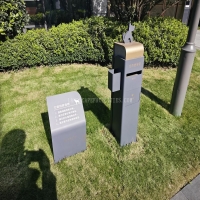Welcome to the website for landscape facilities products and knowledge.
How does the table’s design support the use of quantum computing for complex problem-solving?
The fundamental architecture of quantum computing systems—often visualized as a sophisticated "table" of interconnected components—serves as the critical foundation for tackling complex computational challenges that remain beyond classical computing capabilities. This structural design directly facilitates complex problem-solving through several integrated mechanisms. The strategic arrangement of qubits within this framework enables massive parallel processing, allowing quantum systems to evaluate multiple solutions simultaneously rather than sequentially. This quantum parallelism proves particularly valuable for optimization problems, cryptographic challenges, and molecular simulations where classical computers must test possibilities one by one.
The table's design incorporates crucial error correction protocols through physical qubit organization and connectivity patterns. By distributing logical qubits across multiple physical qubits and implementing sophisticated entanglement networks, the architecture maintains quantum coherence long enough for meaningful computation. This stability directly supports the execution of complex quantum algorithms like Shor's algorithm for factorization or Grover's algorithm for database search, which would otherwise collapse due to environmental decoherence.
Furthermore, the hierarchical design of quantum computing tables enables specialized zones for different computational phases. Qubit initialization regions, gate operation areas, and measurement sections work in concert like an assembly line for quantum information processing. This spatial organization mirrors the logical flow of quantum algorithms, minimizing qubit transport requirements and reducing operational errors. The cryogenic infrastructure integrated directly into this table design maintains the ultra-low temperatures necessary for superconducting qubits to function, while precisely calibrated control systems manipulate quantum states with nanosecond timing accuracy.
The interconnect topology—whether using nearest-neighbor coupling or all-to-all connectivity—directly influences which types of problems the quantum computer can solve most efficiently. Problems with inherent locality, such as quantum chemistry simulations where particles primarily interact with their nearest neighbors, benefit from lattice-based qubit arrangements. Conversely, problems requiring global information sharing perform better on fully connected architectures, despite their increased engineering complexity.
This architectural approach extends beyond mere hardware considerations to encompass the entire quantum stack. The physical qubit layout informs compiler design for optimal circuit decomposition, while the control system integration enables real-time error detection and correction. As quantum computing advances toward practical applications, the continued refinement of these table designs—balancing qubit count, connectivity, and error rates—will determine which complex problems become computationally tractable, from drug discovery and materials science to financial modeling and artificial intelligence.
Related search:

Recommendation
Outdoor cat and dog feces trash can; Community pet trash can; Metal multi-color design